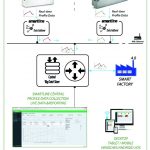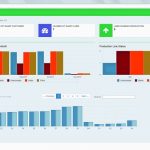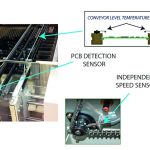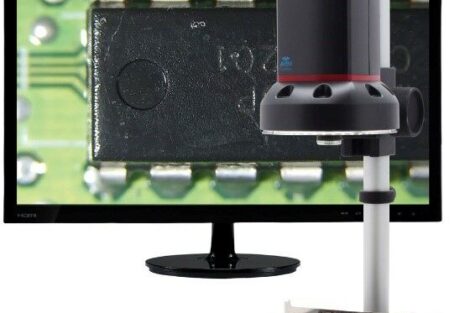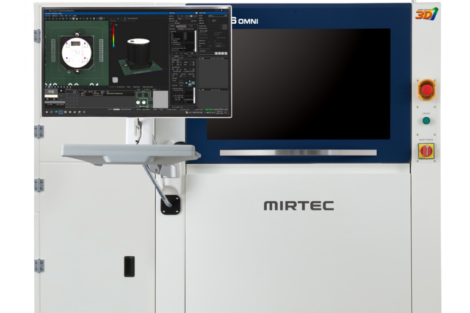It is hard to open an Industry newsletter or visit an equipment manufacturer’s website without coming across a mention of the Internet of Things (IoT), Industry 4.0, SMART Manufacturing or ‘big data’. The accessibility to obtain data will only increase and this information and its real-time processing will become one of the most important resources for companies in the future.
Mark Stansfield, SolderStar
This revolutionary process is thought to change the face of the electronics industry in the coming years, with specialist companies producing equipment and software where information can be used to improve a customers’ efficiency resulting in cost savings.
Some examples for Industry 4.0 are machines that predict failures and trigger maintenance processes autonomously or self-organised logistics that react to unexpected changes in the production. Networks and processes have so far been limited to one factory. But in an Industry 4.0 scenario, these boundaries of individual factories will most likely no longer exist. Instead, they will be lifted in order to interconnect multiple factories or even geographical regions.
In the current industry environment, providing product with the least cost is the key to success and industrial factories are trying to achieve as much performance as possible to increase their profit as well as their reputation. In this stage, the utilisation of data for understanding the current condition and detecting faults and failures is an important topic to research to highlight root cause of problems and possible faults in the system. In contrast, in an Industry 4.0 factory, in addition to condition monitoring and fault diagnosis, components and systems are able to gain self-awareness and self-predictiveness, which will provide management with more insight on the status of the factory (www.mckinsey.com)
IoT techniques and technologies are not new, in-fact that is what is so powerful, the network infrastructure, software protocols and formats are well established with excellent development and diagnostic tools to quickly connect and scale systems across the shop floor. The interchange of information is simple using these formats to allow wider systems to share in the data collected.
Production machinery will no longer simply processes the product, but the product will communicate with the machinery to tell it exactly what to do. Industry 4.0 has the vision to connects embedded system technologies and SMART production processes to drastically transform industry and production giving way to the SMART factory development.
From a purist’s point of view, all sensors will be intelligent and can collaborate to make a massively intelligent network of devices to help manufactures build ultra-smart manufacturing lines. That may come one day, but at this time many in the industry are currently only looking at the ‘big data’ phase of this digital revolution.
At this time engineers are not sure what data is actually useful to them, for example what can be analysed successfully to improve a machines down time. The development phase of capturing manufacturing needs to first occur, before that can be employed in the full production environment to help with financial savings. Many companies are looking at the ‘low hanging fruit’, one of these areas is clearly the reflow ovens and the soldering process. Technology employed in this area typically uses immense expertise in thermal dynamics and control systems to provide ovens that can successfully solder assemblies of all shapes and sizes. Some higher end ovens already have some data collection capabilities and the use of bespoke systems are being implemented to capture chronological process information. This available data is usually taken from the control system feedback sensors which give a good indication of process performance, but may not be informative enough to give the level of data required to maximise production efficiencies.
Improvements made in the oven data we capture
Real-time oven monitoring systems have been with us for decades, one example is the original Solderstar system –APS (Automatic profiling System) first introduced in 2005 which included a single rigid probe fitted along the fixed conveyor to enable measurement of process temperatures close to product level. The probe technology has evolved over time, and now a fast response flexible probe is fitted to both left and right sides of the process to detect process problems in both single and dual lane conveyor systems in a quicker and more comprehensive manner.
The data captured by these probes is much more informative; it gives a true reflection of how the process is responding to oven loading or extraction system change for example. The other big advantage of these 3rdparty measurement systems is the ability to not only monitor machine parameters such as temperature and speed, but collaborate this information with real profile data to predict what how the current process is performing in terms of peak temperature, time above and other process or component parameters.
The question is why would this information be useful? Quite simply other than ensuring the confidence that every assembly produced is within defined limits, it is useful for predicting trends in the process that are likely to result in a reduction in soldering quality or a stop condition ultimately occurring on the machine. Using SPC and intelligently tracking the performance data available from these measurement systems will allow trends to be predicted. When combined with improved maintenance scheduling it can result in improvements in up-time and a higher yield.
The ultimate goal in the Industry 4.0 / SMART Factory scenario are these predictions will happen automatically by intelligent systems which have this data available to them.
The next step – machine monitoring to SMART Manufacturing
Traditionally the main adopter of real-time reflow oven monitoring systems were medical, safety critical and military applications. The technology has now been widely accepted as the ‘way to manufacture’ in other industries such as high value sectors like the automotive industry or where high production volumes are normal. The drive for smarter and leaner systems that collaborate has driven specialist manufacturers of thermal profiling equipment to take its Machine Monitoring Platforms to the next level to meet the needs of this exciting new development.
One example of this evolvement is the real-time monitoring solution SolderStar SMARTLine, whichis essentially a suite of hardware and software products allowing electronic manufactures to gain a real insight into how the thermal process is performing. It can be scaled across multiple manufacturing lines or factories and provides the networking, data collection and collaboration modules to allow ovens to be as smart as any other pieces of equipment on the line. Using well-established networking protocols and infrastructures just makes sense, existing skills in IT and network configuration make deployment much more simple and end users are comfortable with management long term.
Using data exchange formats such as XML also makes things much simpler from both a development and integration point of view. Any format can be ultimately used, but the web based techniques championed for IoT are well established and work well. There is XML processing libraries in all major development languages, many are free and make the reading and writing of these formats trivial for a software engineer.
What can we do today and how developments are underway?
Companies are pushing forward with development to work towards the smart factory concept and SolderStar is no exception to the rule. With existing measurement technology already developed to make the transition relatively quick, with focus on the development of connectivity solutions that allows measurement units to be networked, gather and share their data to any system that is interested. With interest from customers and enquiries already being voiced, the company has answered the ‘call’ to bring ‘big data’ capabilities reflow ovens. SolderStar could already provide data for every assembly that passes through the line, including zone temperatures, speed, barcode, time/date, and profile data and soldering process parameters.
In addition to this they can offer live information which shows what is happening on the line, the system is also ‘two way’, not only can measurement data be streamed from the oven, but it can also make requests to the SMARTline system to perform an action on the line, for example driving a light tower or forcing a SMEMA signal to stop the feed of product into the oven. The system came together very quickly, as in essence 50 % of the required development was already well established. A system was already in place that produced high quality measurements from an oven, and its output easily imported to factory management software-job done – or so we thought!
The company quickly realised that the move to full factory management integration was not something realistic for many, especially if the current phase of involvement is “let’s measure and see what is useful to us.”
There was also the need to show the power this data can bring, so the company developed a focussed software tool named ‘SMARTLine – Central’. SMARTLine – Central is a web based software system that receives data from the networked nodes fitted to the ovens; it is intelligent and needs little or no configuration for a new site. All items are intelligently created as data begins to flow into the system; data is stored using SQL and NOSQL techniques to provide a robust and scalable data gathering solution. It can be run on anything from a single board computer to a virtualised server, depending on how much data is flying around. The initial motivation ultimately was to show potential customers that they can improve their process quality right now and the investment in improved oven monitoring is a keystone in their move to increasing production data intelligence and smarter methods.
With the tools we have today, manufacturers can immediately see through ‘dashboards’ and web based reporting how the thermal process is performing whether that be live and historically. Adding to this development is underway on reports that provide information from the data about line to line performance, so that differences can be highlighted and questioned.
Where do we go from here?
It is my belief that groups of intelligent sensors collaborating to produce the specialised needs of the individual elements of the process are best suited. Multiple decisions need to be taken in real time and require embedded intelligence with local decision making capabilities at the production line, rather than a central system making all decisions from lower intelligence units. Using the correct technologies means that powerful systems can be quickly created and the ‘big data’ they generate is made available to whatever can make use of it.
One example is the desire to reduce energy and nitrogen consumption, with its obvious cost saving. By analysing oven throughput information over time, plus integration of data from other systems such as oxygen sensors and real-time power consumption measurement, it will allow all the data to be correlated to best achieve any savings. Future development in oven technology will allow machines to be controlled more intelligently and remotely resulting in the lowest cost model for manufacturing flow. Alternatively, if end users already have this capability then integration portals will allow the raw process data to be received and analysed by third party system that make use of the data to make their own informed decision.
The future holds the possibility to monitor all machine data through technology developed by forward-thinking companies like SolderStar. The result is that manufacturers will be able to increase productivity and profitability.
Share:


